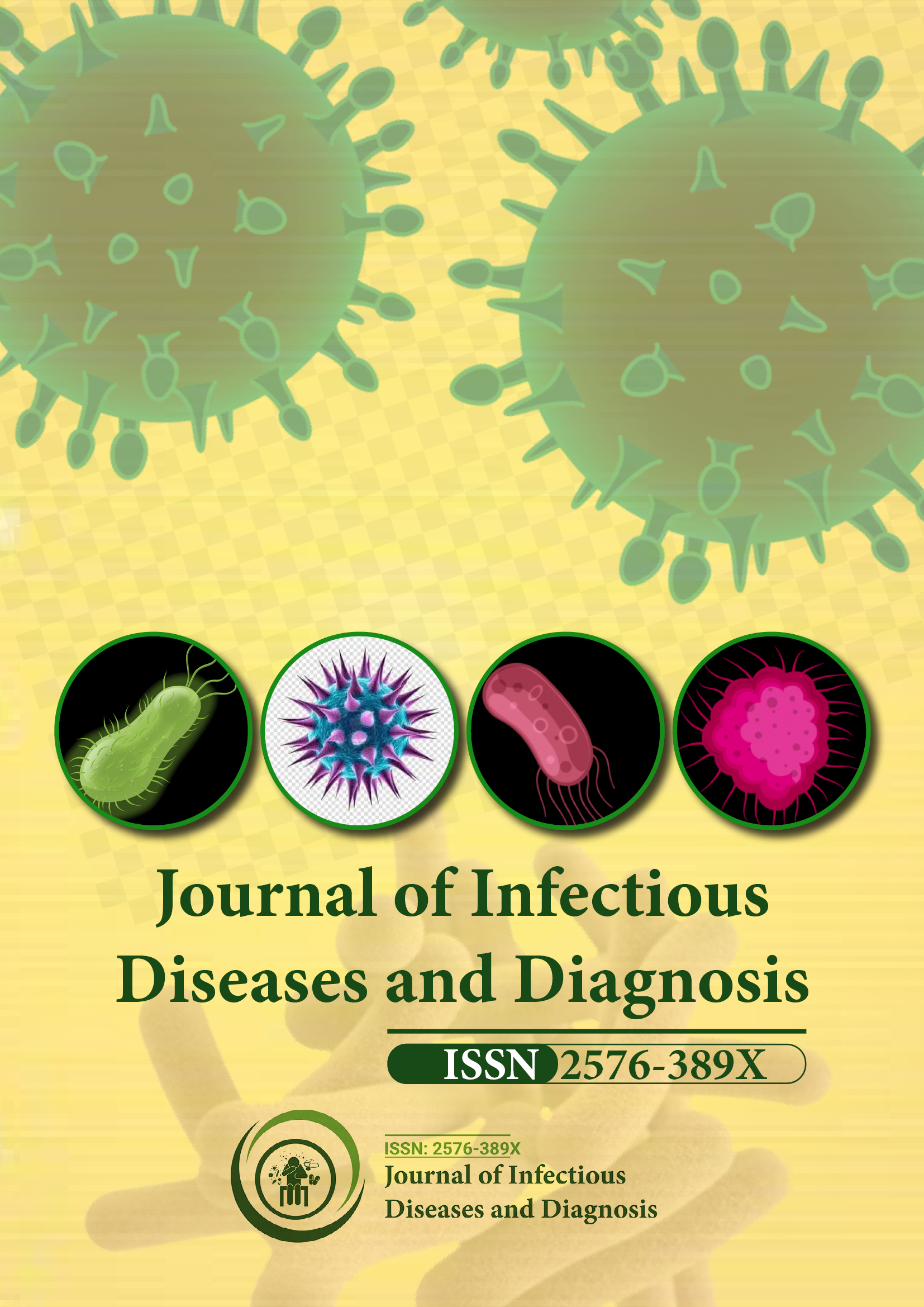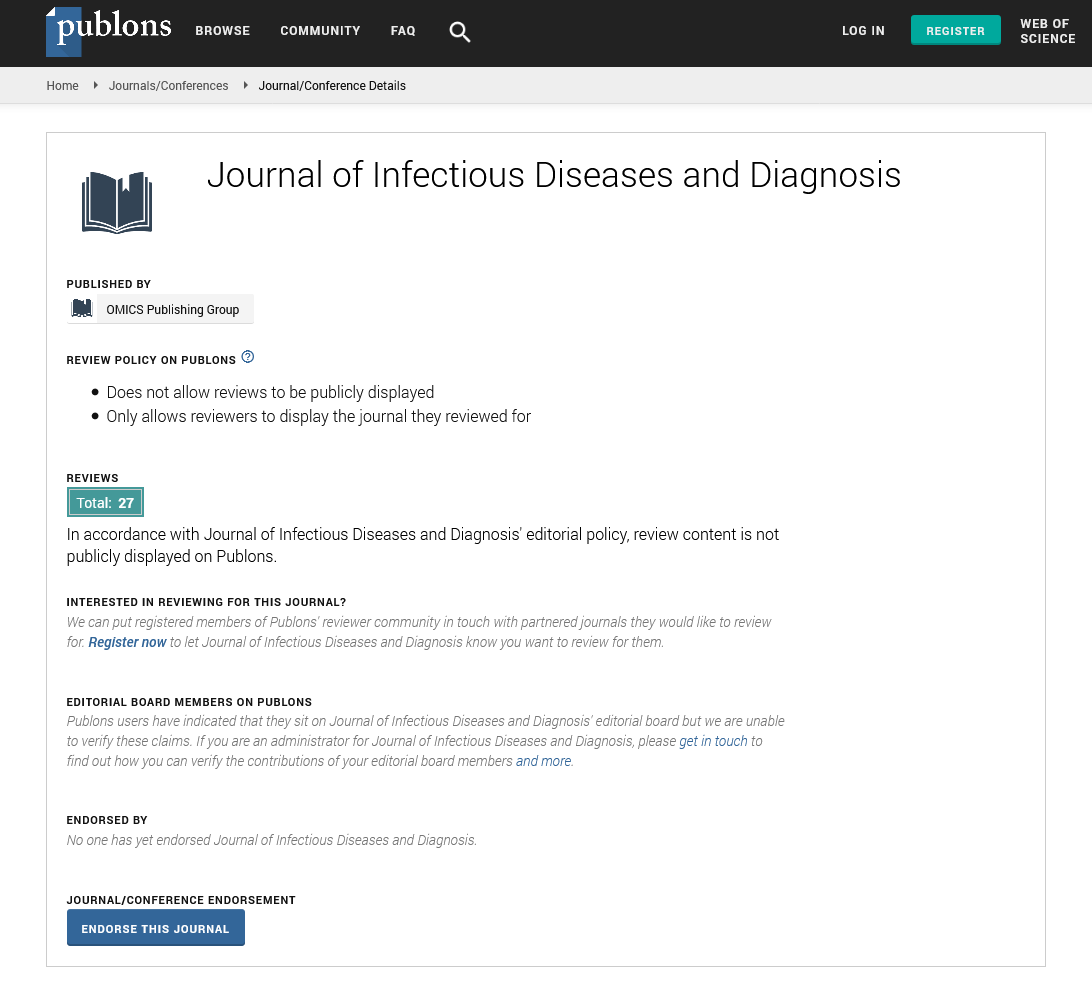Indexed In
- RefSeek
- Hamdard University
- EBSCO A-Z
- Publons
- Euro Pub
- Google Scholar
Useful Links
Share This Page
Journal Flyer

Open Access Journals
- Agri and Aquaculture
- Biochemistry
- Bioinformatics & Systems Biology
- Business & Management
- Chemistry
- Clinical Sciences
- Engineering
- Food & Nutrition
- General Science
- Genetics & Molecular Biology
- Immunology & Microbiology
- Medical Sciences
- Neuroscience & Psychology
- Nursing & Health Care
- Pharmaceutical Sciences
Commentary - (2025) Volume 10, Issue 3
Point-of-Care Molecular Diagnostics for Emerging Viral Infections: A Comparative Study of Accuracy and Turnaround Time
James Kenny*Received: 30-Apr-2025, Manuscript No. JIDD-25-29293; Editor assigned: 02-May-2025, Pre QC No. JIDD-25-29293 (PQ); Reviewed: 16-May-2025, QC No. JIDD-25-29293; Revised: 23-May-2025, Manuscript No. JIDD-25-29293 (R); Published: 30-May-2025, DOI: 10.35248/2576-389X.25.10.328
Description
The detection and containment of emerging viral infections depend largely on timely diagnosis. In recent years, the global burden of diseases caused by novel viruses such as SARS-CoV-2, Zika, Nipah and others has revealed limitations in conventional diagnostic workflows. Centralized laboratory testing, while highly accurate, is often delayed by sample transport, backlogs and the need for skilled technicians. These platforms are designed to deliver quick results with minimal infrastructure, enabling healthcare providers to make decisions closer to the patient.
This study was conducted across four tertiary care hospitals located in different regions to evaluate the diagnostic performance and operational characteristics of three POC-MDx systems. A total of 340 patients presenting with febrile illness, respiratory symptoms, or a recent history of contact with a confirmed viral case were enrolled. Each participant provided samples appropriate to the suspected infection, including nasopharyngeal swabs, serum, or saliva. These samples were tested simultaneously using standard RT-PCR in the laboratory and three POC-MDx systems under field or near-patient conditions.
The devices included in the study were a cartridge-based miniaturized RT-PCR system, a Recombinase Polymerase Amplification (RPA) unit and a Loop-Mediated Isothermal Amplification (LAMP) device. All three platforms supported sample-to-result automation and were compatible with various sample types. The performance of these systems was analyzed in terms of sensitivity, specificity, positive predictive value, negative predictive value and time required to obtain results. The cartridgebased RT-PCR unit delivered a sensitivity of 97.1% and specificity of 98.4%, closely matching the lab-based RT-PCR results. The RPA system achieved 93.2% sensitivity and 97.6% specificity. The LAMP assay showed a sensitivity of 89.6% and specificity of 96.9%, with higher rates of false positives in specimens with mixed viral RNA content or suboptimal storage. Turnaround time from sample loading to result varied between 22 minutes for the LAMP platform to approximately 50 minutes for the cartridge-based RTPCR. Traditional RT-PCR, by contrast, took an average of 7 hours including transport and processing delays.
Device usability and integration into clinical workflows were also assessed. Operators required less than one hour of training to use any of the three POC-MDx systems. Minimal sample preparation, closed systems and visual or digital readouts improved user confidence. All devices operated on rechargeable batteries or power adapters, suitable for areas with unreliable electricity. Environmental testing showed that each device remained stable and functional at temperatures between 15°C and 38°C, which is important for tropical and subtropical regions. A striking benefit observed was the impact of rapid results on patient triage and treatment initiation. Over 75% of patients received initial management or were placed in appropriate care zones within 90 minutes of sample collection. By contrast, patients awaiting central lab results often remained in general waiting areas, increasing the risk of cross-infection and delaying therapeutic decisions. The speed of POC-MDx also facilitated timely outbreak notification and quarantine protocols.
While performance metrics were generally favorable, a few limitations were noted. False-negative results were occasionally reported in patients with low viral loads, particularly during early incubation or late infection stages. Sample quality played a significant role in such discrepancies. The cost per test varied considerably, with the cartridge-based RT-PCR being the most expensive and the LAMP system the least. Although cost remains a constraint for scale-up in resource-poor settings, the savings achieved through reduced isolation costs, shorter hospital stays and targeted treatments present a balancing factor.
Clinicians and field staff consistently reported satisfaction with the immediate availability of diagnostic information. The ability to isolate or refer a patient based on molecular confirmation without delay led to more confident management, particularly during disease surges. The convenience of not relying on centralized labs enabled outreach programs and mobile clinics to expand diagnostic coverage, especially in underserved populations. This study highlights the transformative potential of point-of-care diagnostics in managing emerging viral infections. Each system demonstrated a distinct combination of speed, accuracy and practicality. The cartridge-based RT-PCR offered the highest precision but required more investment. The isothermal platforms, though slightly less sensitive, provided faster results and greater portability. Depending on regional priorities and available infrastructure, different POC MDx systems could be selected for deployment.
The broader impact extends beyond individual patient care. By decentralizing diagnostic access, health systems can enhance early warning signals for new outbreaks and tailor interventions at the community level. Moreover, reducing the load on central laboratories can improve response time during periods of increased testing demand. Future developments in this field may focus on multiplex testing capabilities, further reducing diagnostic gaps for co-infections or overlapping syndromes.
In conclusion, point-of-care molecular diagnostics present a practical advancement in the fight against emerging viral threats. Their high agreement with laboratory-based methods, combined with rapid processing and ease of use, makes them valuable additions to diagnostic strategies. Although some challenges persist in terms of cost and marginal variations in sensitivity, the overall benefits in terms of timely clinical decisions and outbreak control are significant. As new pathogens continue to emerge, the need for adaptable, fast and accurate diagnostics will remain at the forefront of public health response. Point-of-care molecular tools, as shown in this study, offer a promising step forward in addressing that need effectively and efficiently.
Citation: Kenny J (2025). Point-of-Care Molecular Diagnostics for Emerging Viral Infections: A Comparative Study of Accuracy and Turnaround Time. J Infect Dis Diagn. 10:328.
Copyright: © 2025 Kenny J. This is an open-access article distributed under the terms of the Creative Commons Attribution License, which permits unrestricted use, distribution, and reproduction in any medium, provided the original author and source are credited.

